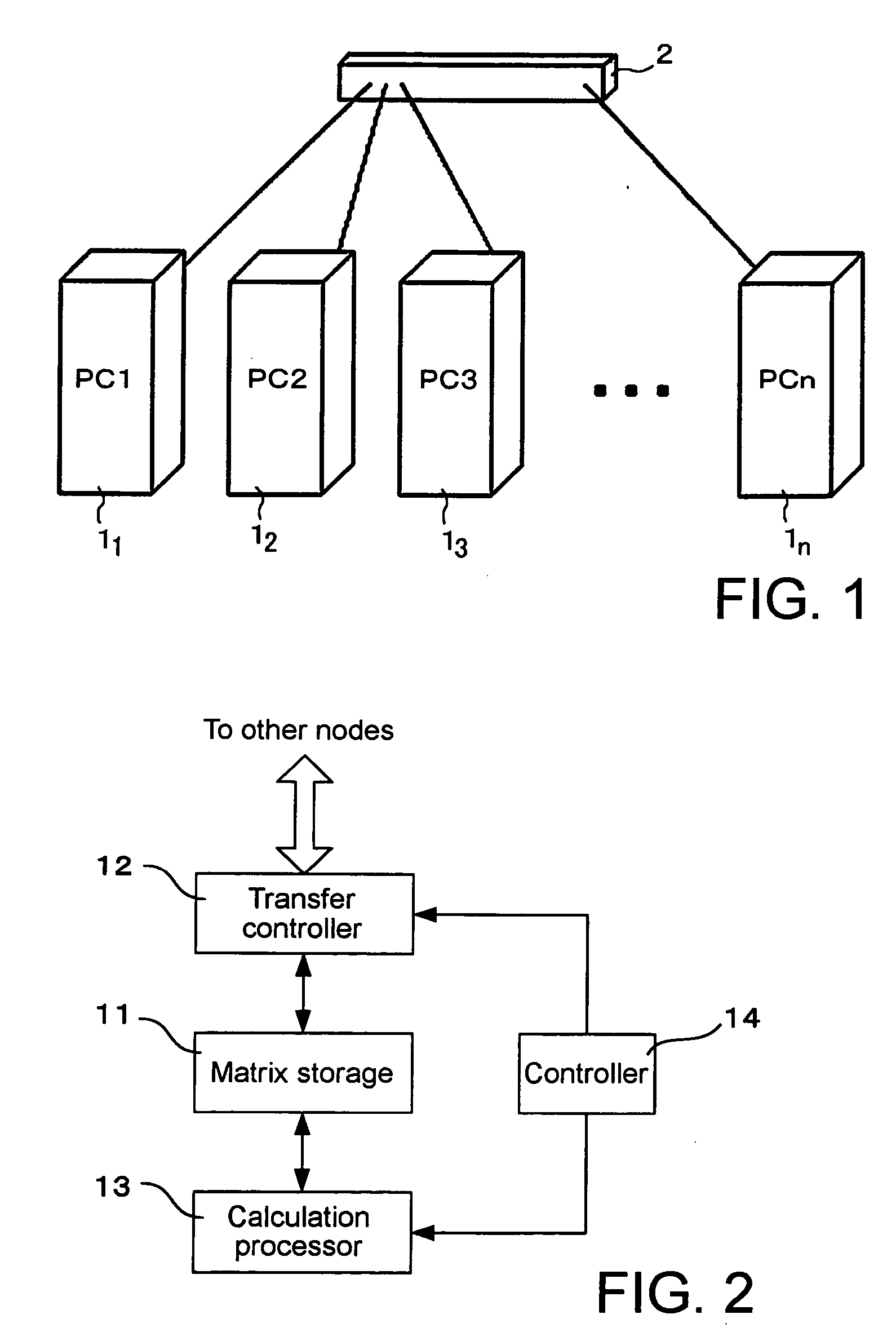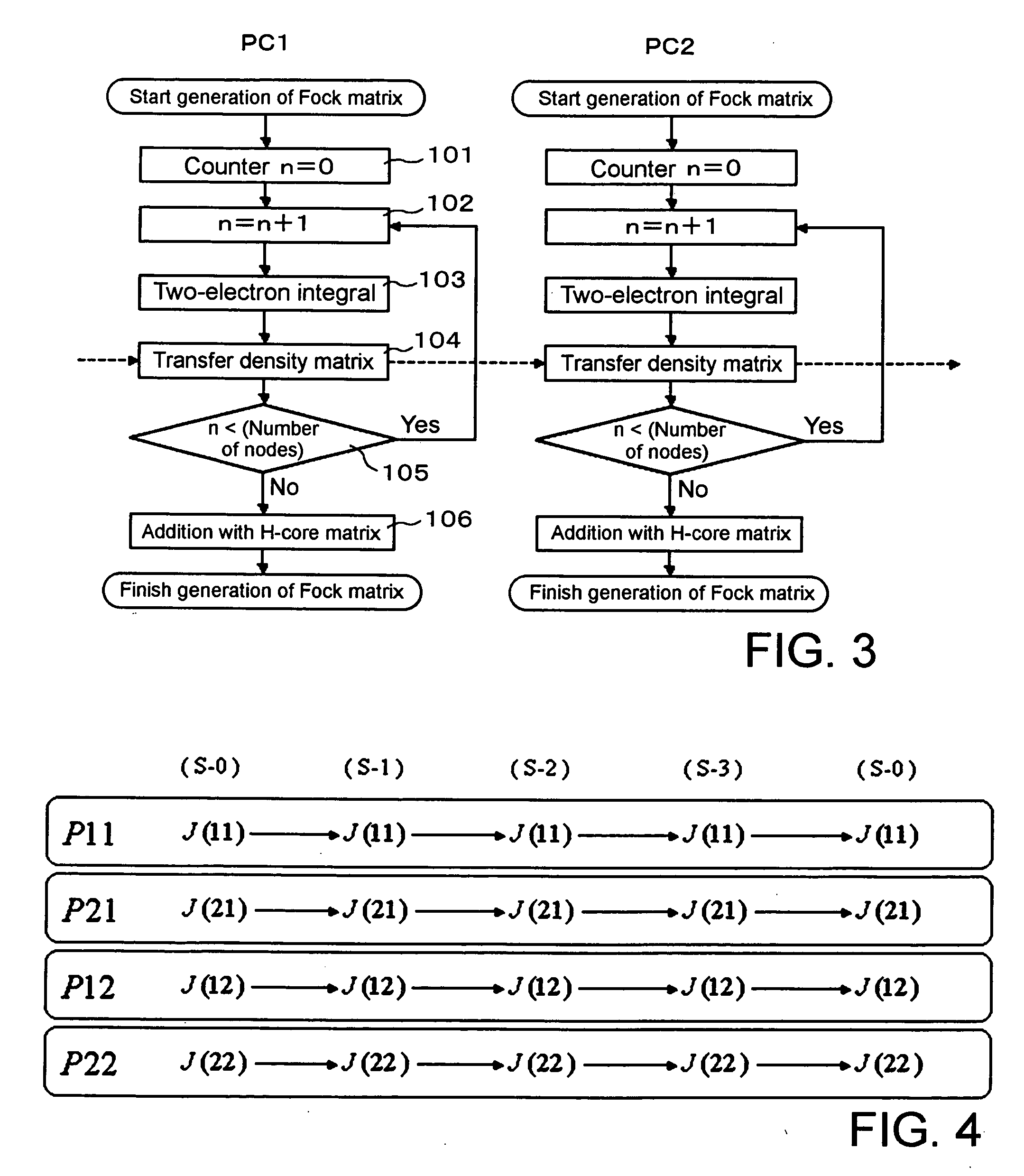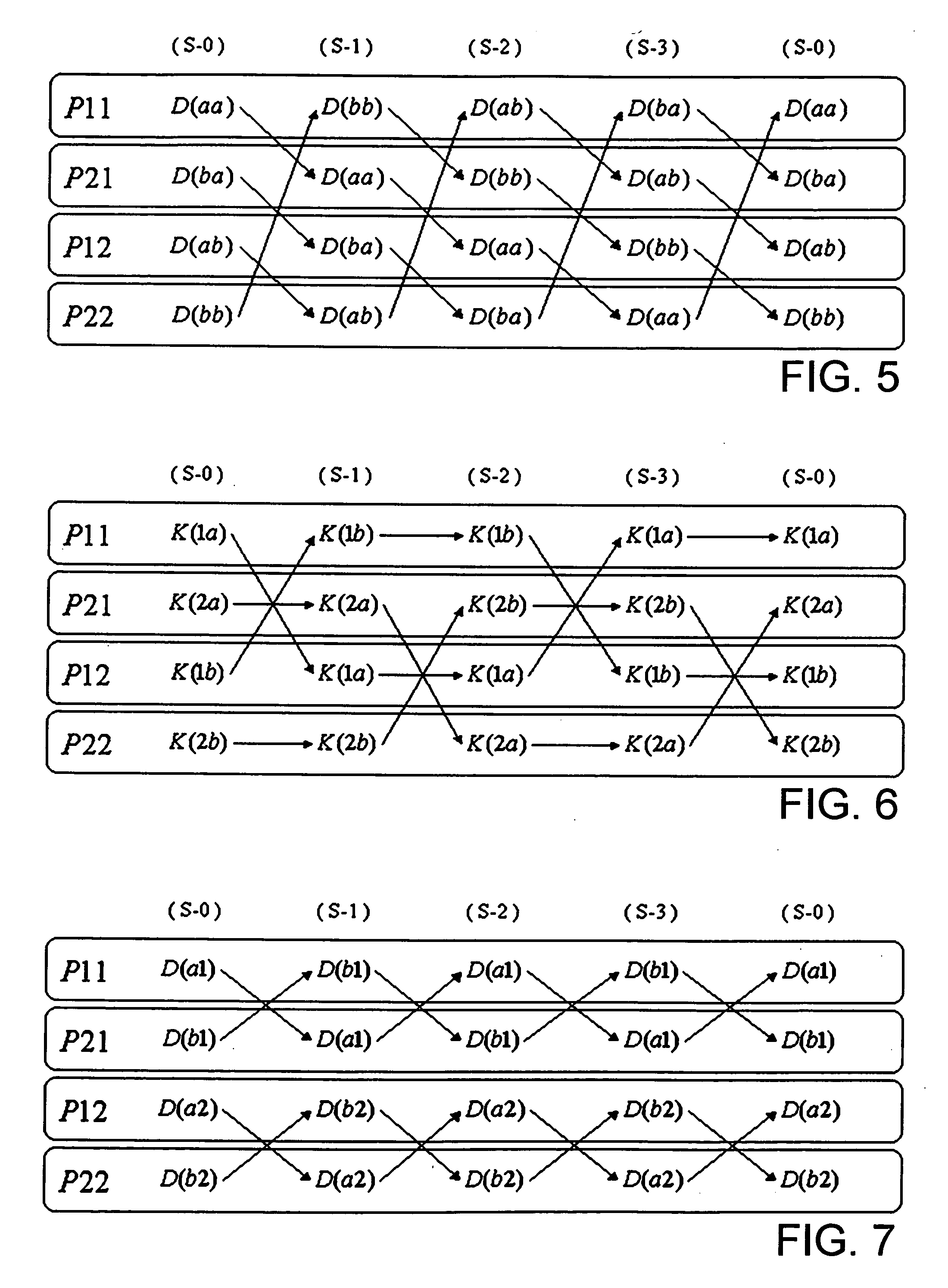Parallel calculation method and device
a computing method and a technology of parallel computing, applied in the field of parallel computing methods and systems suitable for molecular simulation, can solve the problems of inability to realize measurement, and inability to handle a matrix greater than the memory capacity of the host machine, so as to reduce the amount of computation, increase work areas, and reduce the amount of transfer
- Summary
- Abstract
- Description
- Claims
- Application Information
AI Technical Summary
Benefits of technology
Problems solved by technology
Method used
Image
Examples
example 1
Cyclical Density Matrix Scheme
[0042] First, one embodiment called a cyclical density matrix scheme will be described. Again, Fock matrix F is defined as Eq. (7). Frs=Hrs+∑t,u=1NDtu[(rs❘tu)-12(rt❘su)](7)
[0043] In Eq. (7), Frs, Hrs, Dtu (r, s, t, u=1, . . . , N) are matrixes. Since the number in which a matrix is divided is 4, r, s, t and u are each divided into two regions, as shown in Eq. (8).
R1, S1, T1, U1=1, . . . , N / 2, R2, S2, T2, U2=N / 2+1, . . . , N, (8)
[0044] With this regional division, a matrix is divided into four. The divided submatrixes are named as in Eq. (9). F(11)=FR 1S 1H(11)=HR 1S 1D(aa)=DT 1U 1F(21)=FR 2S 1H(21)=HR 2S 1D(ba)=DT 2U 1F(12)=FR 1S 2H(12)=HR 1S 2D(ab)=DT 1U 2F(22)=FR 2S 2H(22)=HR 2S 2D(bb)=DT 2U 2.](9)
When these are represented in an integrated manner, they can be represented as in Eq. (10). F(RS)={F(11),F(21),F(12),F(22)}F(RS)={H(11),H(21),H(12),H(22)}D(TU)={D...
example 2
Double Cyclical Density Matrix Scheme
[0054] Next, a mode called a double cyclical density matrix scheme will be described. In this mode, a duplication of density matrix D is used to halve the number of calculations for integration, thereby reduce computational time. The symbols used here are the same as those used in the aforementioned cyclical density matrix scheme. In this scheme, Eq. (7) is decomposed as in Eq. (16). Frs=Hrs+Jrs-12KrsJrs=∑t=1N∑u=1NDtu(rs❘tu)Kru=∑t=1N∑s=1NDts(rs❘tu)](16)
where, J and K are matrixes presenting summations of Coulomb integrals and exchange integrals, respectively. This can be written down for every region and every node in a similar manner as for the case of the cyclical density matrix scheme, and Eqs. (17) and (18) are obtained. P 11:F(11)=H(11)+J(11)-K(11) / 2P 21:F(21)=H(21)+J(21)-K(21) / 2P 12:F(12)=H(12)+J(12)-K(12) / 2P 22:F(22)=H(22)+J(22)-K(22) / 2](17)P 11:J(11)=D(aa)(11❘aa), J(11)=D(bb)(11❘bb),J...
example 3
Quadruple Cyclical Density Matrix Scheme, Part-1
[0070] Next, a mode called a quadruple cyclical density matrix scheme will be described. In this mode, density matrix D and its duplications, four in total, are prepared, and the symmetry between (rs|tu)(tu|rs) in two-electron integration is made use of to further reduce calculation of integrals compared to the double cyclical density matrix scheme, hence reduce calculation time. The symbols used here are the same as those used in the aforementioned cyclical density matrix scheme. In this scheme, Eq. (7) is decomposed as in Eqs. (22) to (24). Frs=Hrs+Jrs-12KrsJrs=J 1rs+J 2rsKru=K 1ru+K 2ruJ 1rs=∑t=1,m<=nN∑u=1,m<=nNDtu(rs❘tu)d(m,n)J 2tu=∑r=1,m<=nN∑s=1,m<=nNDrs(rs❘tu)d(m,n)K 1ru=∑t=1,m<=nN∑s=1,m<=nNDts(rs❘tu)d(m,n)K 2ts=∑r=1,m<=nN∑u=1,m<=nNDru(rs❘tu)d(m,n)](22)
m=(s−1)N+r, n=(u−1)N+t, (23)
d(m,n)=1 for m≠n, 1 / 2 for m=n (24)
[0071] This represents that Coulom...
PUM
 Login to View More
Login to View More Abstract
Description
Claims
Application Information
 Login to View More
Login to View More - R&D
- Intellectual Property
- Life Sciences
- Materials
- Tech Scout
- Unparalleled Data Quality
- Higher Quality Content
- 60% Fewer Hallucinations
Browse by: Latest US Patents, China's latest patents, Technical Efficacy Thesaurus, Application Domain, Technology Topic, Popular Technical Reports.
© 2025 PatSnap. All rights reserved.Legal|Privacy policy|Modern Slavery Act Transparency Statement|Sitemap|About US| Contact US: help@patsnap.com



